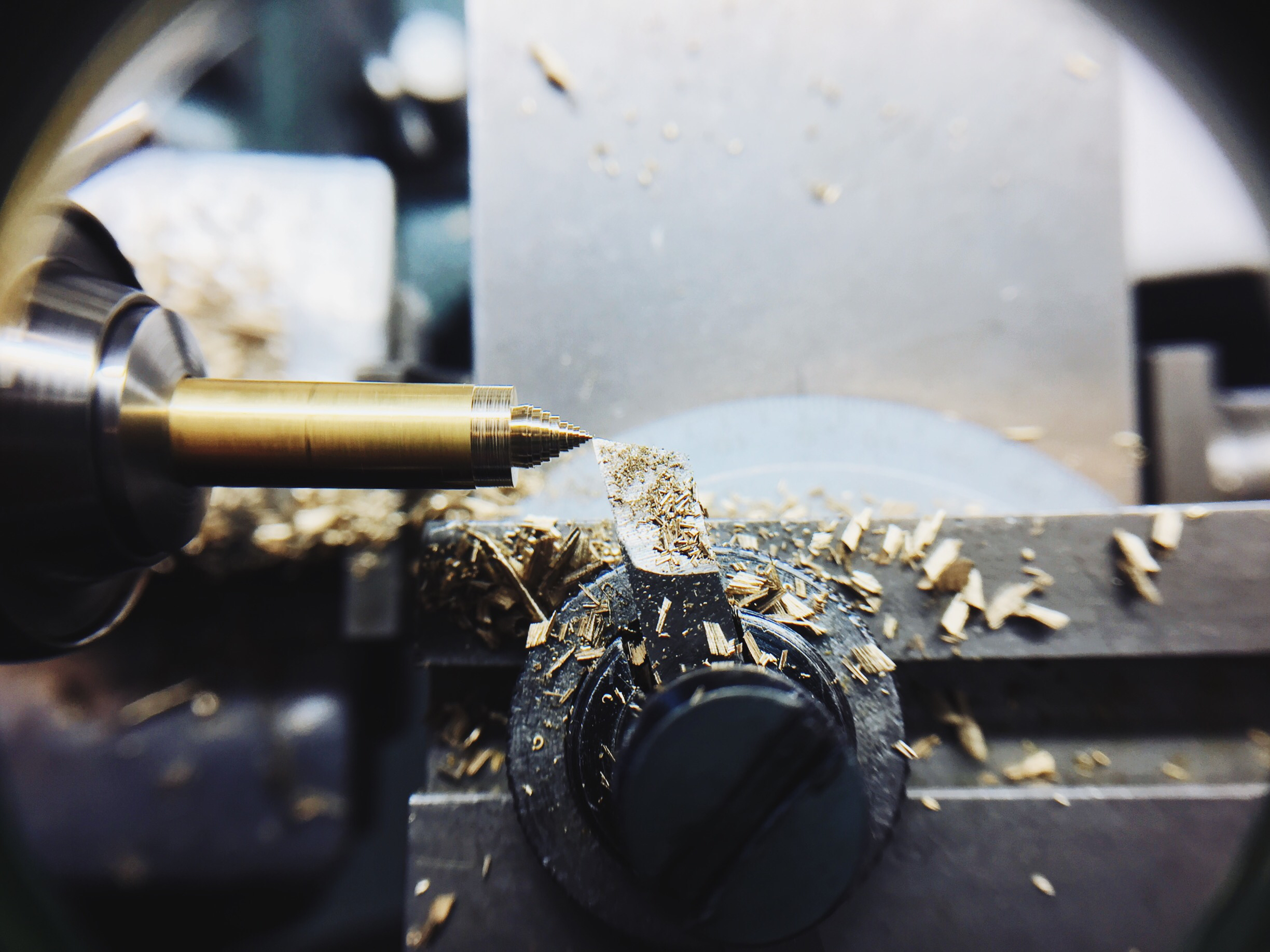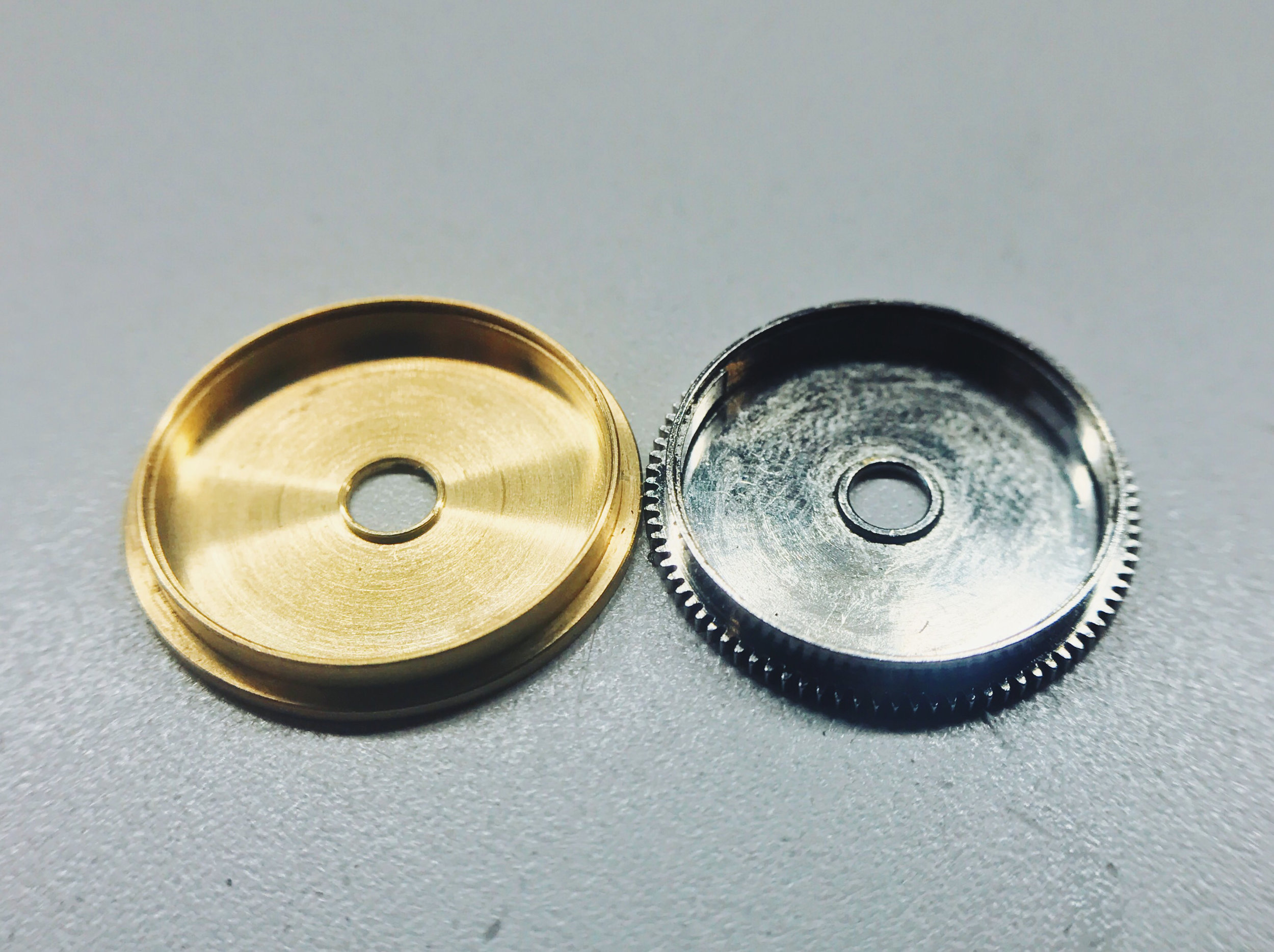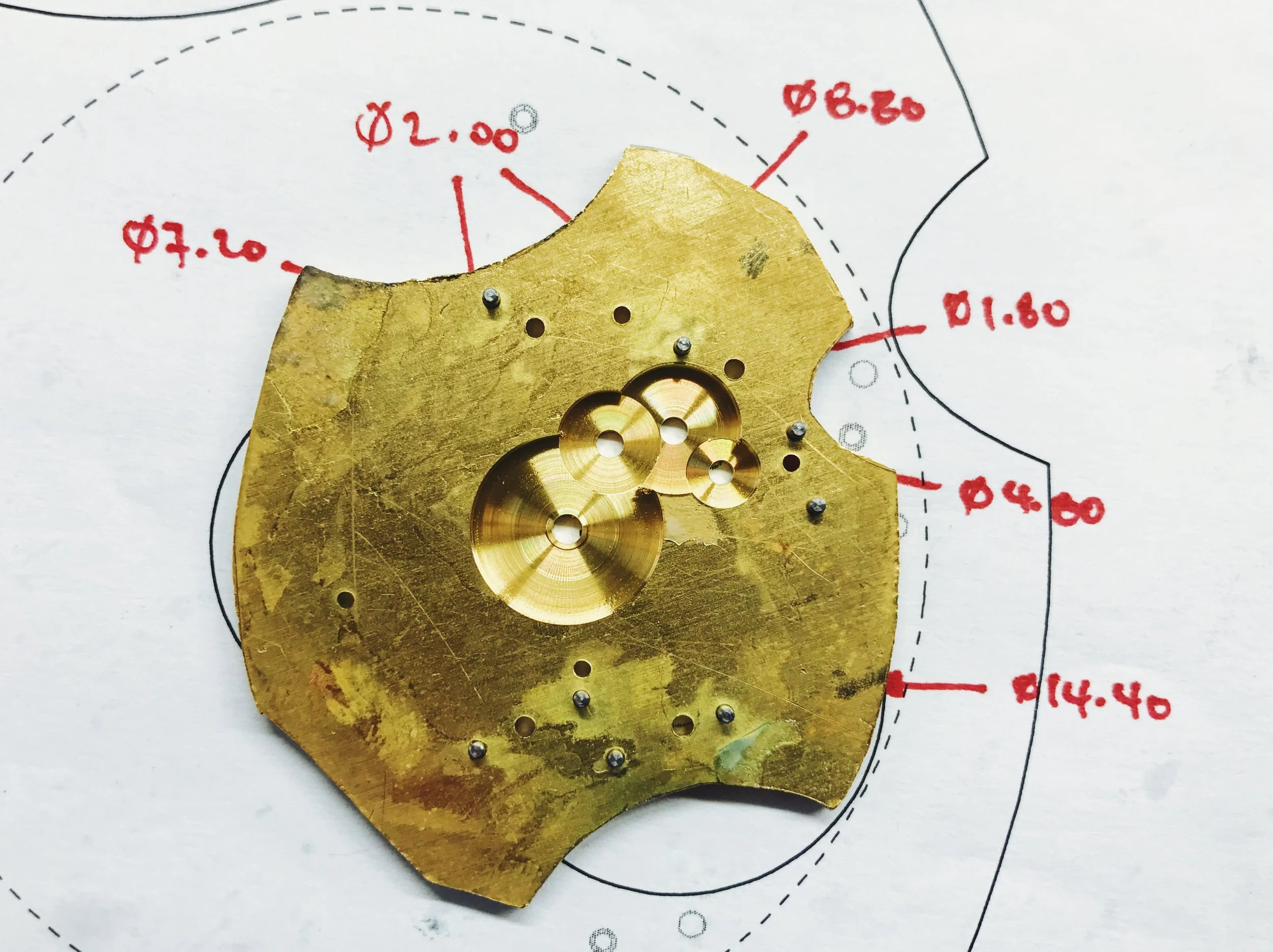Finish lines

In watchmaking, an object's functionality is paramount—but it should also be pretty.
Surface finish is a big part of watchmaking, and can make or make your grade. While they may seem cosmetic finishes often serve functional uses as well, providing more or less friction, for example. That said, more than anything else, they're an indicator of a watchmaker's attention to detail.
Different materials and tools leave different surface finishes, and some processes require several tools to complete the process. Rough files leave fairly deep marks. #4 files can bring metal close to a mirror polish. Emery paper leaves a fine directional grain. The lathe only uses one cutting bit for everything, including the finish.
The cutter is, essentially, a sharp angled point. Used quickly and forcefully, this can remove large amounts of material, but that leaves behind gouges and unsightly marks. Used slowly and carefully, you can achieve close to a mirror finish.
The two cylinders here are seen under high magnification (the 10x loupe). The bottom one has a rough shaping cut, with no regards to surface finish. The top one has been carefully finished, with a final pass that removed less than 0.01 mm of material. You can see the rough stripes with the naked eye—the finished product seems nearly flawless, even under moderate magnification.
This is about an 80-85% finishing job for a lathe. It'll take a lot more practice to get to 90% or above. The biggest contributors to a poor surface finish are cutting speed and cutter condition (which can be broken down further). As metal is machined, it leaves small traces behind on the cutting tool. This is almost invisible to the naked eye, but can leave very light scuffs that ruin the finish completely.
Another interesting thing to note is the "striping" on the rough-cut piece. Those stripes are actually a ghost image of the screw threads inside our lathe cross slide—the torque of turning the handle moves the slide rotationally, and while it's not significant, it's visible.
Watchmaking student at the Lititz Watch Technicum, formerly a radio and TV newswriter in Chicago.





